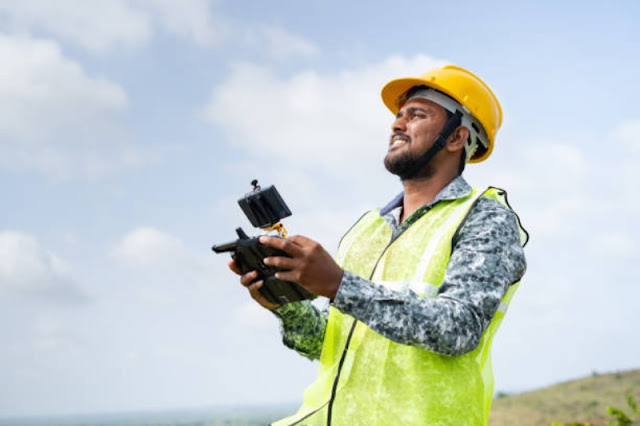The Evolution of Remote-Controlled Technology: From TV Remotes to Beyond
The Evolution of Remote-Controlled Technology: From TV Remotes to Beyond
Remote-controlled technology has become an integral part of
our daily lives, offering convenience, efficiency, and enhanced capabilities
across various domains. From the humble TV remote to the sophisticated drones
and autonomous vehicles, this technology has evolved significantly over the
years. In this piece, we will sightsee the evolution, applications, and the
future of remote-controlled technology.
The Early Days: TV Remotes
The concept of remote-controlled technology dates back to
the 1950s when the first TV remote control, known as the "Lazy
Bones," was introduced by Zenith. It utilized ultrasonic waves to change
channels and adjust the volume. This innovation revolutionized the way people
interacted with their televisions, making it much more convenient than manually
turning dials.
As the years passed, TV remotes became more advanced,
incorporating infrared technology and additional features such as on-screen
menus and programmable buttons. Today, smart TV remotes can do much more than
simply change channels; they can connect to the internet, control various
devices, and even offer voice recognition.
Remote-Controlled Vehicles
Remote-controlled vehicles, such as cars and aircraft, have
also seen remarkable advancements. In the early days, hobbyists and enthusiasts
built their own radio-controlled cars and airplanes. The introduction of
commercial RC cars and planes in the 1960s marked the beginning of a thriving
industry.
Modern remote-controlled vehicles use sophisticated radio
frequency (RF) technology, offering precise control and improved range. These
vehicles are used in various applications, including entertainment, competitive
racing, and even for military purposes, where drones are used for surveillance
and reconnaissance.
Drones: The New Frontier
Drones represent one of the most exciting developments in
remote-controlled technology. Initially used for military purposes, drones have
rapidly expanded into commercial, recreational, and industrial applications.
They are equipped with high-resolution cameras, GPS, and advanced sensors,
making them versatile tools for photography, videography, agriculture, and even
search and rescue missions.
One of the key drivers of drone popularity is their ease of
use. Consumer drones are often equipped with GPS-based features like autonomous
flight modes and return-to-home functions, making them accessible to beginners.
This accessibility has led to a boom in the drone industry, with countless
applications in agriculture, cinematography, construction, and more.
Autonomous Vehicles
Remote-controlled technology has also paved the way for
autonomous vehicles. While self-driving cars may not rely on manual remote
control in the traditional sense, they are remotely monitored and controlled by
human operators when necessary. This technology has the probable to
revolutionize transportation, with promises of improved safety, reduced
congestion, and increased efficiency.
Furthermore, remote-controlled technology is being used in
the development and testing of autonomous vehicles. Engineers can remotely
control and monitor these vehicles during testing, ensuring their safety and
performance in various scenarios.
Robotics and Telemedicine
In recent years, remote-controlled technology has found its
way into the field of robotics and telemedicine. Remote-controlled robots are
being used in various industries, such as healthcare, where they can perform
surgeries with greater precision, or in dangerous environments like nuclear
power plants and disaster-stricken areas.
Telemedicine has also benefited from remote-controlled
technology. Doctors can remotely control medical robots equipped with cameras
and medical instruments to perform examinations and surgeries on patients in
remote locations. This technology has proven precious during the COVID-19
pandemic, enabling healthcare professionals to provide essential care while
minimizing physical contact.
Security and Surveillance
Security and surveillance systems have greatly benefited
from remote-controlled technology. Security cameras and systems can now be
remotely monitored and controlled, allowing homeowners and businesses to keep
an eye on their properties from anywhere in the world. Advanced geographies such
as facial recognition and motion tracking have made these systems more
effective in detecting and preventing security breaches.
In addition to fixed surveillance systems, remote-controlled
security robots are becoming increasingly popular. These robots can patrol
areas, monitor for intruders, and send real-time video feeds to human
operators, enhancing security in a variety of environments.
The Future of Remote-Controlled Technology
The evolution of remote-controlled technology shows no signs
of slowing down. Here are some exciting possibilities for the future:
- 5G
Connectivity: The rollout of 5G networks will provide low-latency,
high-speed connectivity, enabling more real-time remote control
applications. This will be especially significant for autonomous vehicles
and drones.
- AI
Integration: Artificial intelligence will play a pivotal role in
enhancing the capabilities of remote-controlled technology. AI-driven
automation and decision-making will enable more autonomous operations,
making remote control even more efficient.
- Virtual
Reality (VR) too Augmented Reality (AR): VR and AR technologies will
merge with remote-controlled systems, offering operators immersive
experiences and enhanced situational awareness. This will be particularly
valuable in fields like telemedicine and remote piloting.
- Space
Exploration: Remote-controlled technology will continue to play a
crucial role in space exploration, enabling the operation of robots and
spacecraft in distant and inhospitable environments, such as Mars.
Conclusion
Remote-controlled technology has come a long way since the
early TV remotes of the 1950s. Today, it encompasses various applications, from
consumer electronics to industrial and medical fields. As technology advances,
remote-controlled systems will become more sophisticated, offering greater convenience
and expanding into new frontiers. Whether drones capture breathtaking aerial
footage or robots perform surgery with precision, remote-controlled technology
is shaping how we interact with the world around us, and its possibilities are
limitless.

Comments
Post a Comment